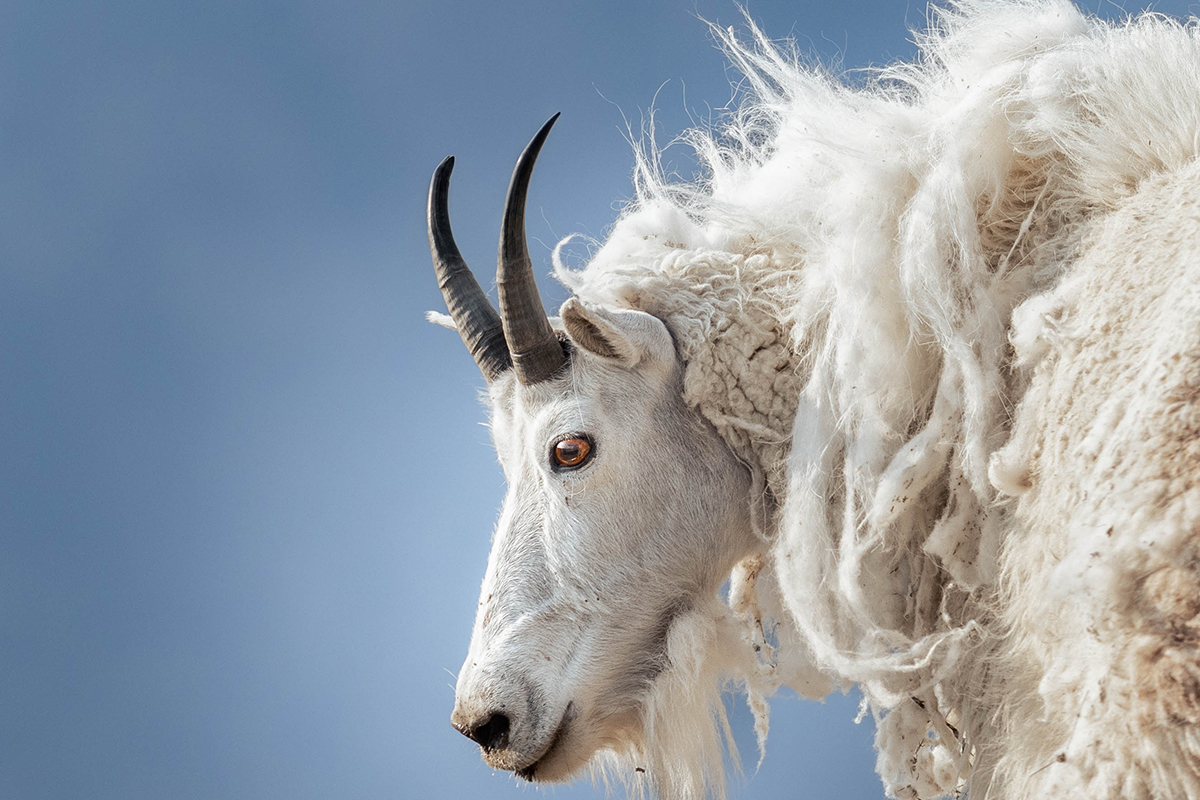Yearning for Yellowstone
Julia Cook, who’s been visiting the national park since she was a kid, now uses her Tamron 150-600mm VC G2 lens to document the resident wildlife.
Share the article:
More Photo Tips | Video Gallery | Photo Gallery | Enewsletter sign-up
By Jenn Gidman
Images by Julia Cook
Growing up in Cody, Wyoming, Julia Cook was a frequent visitor to Yellowstone National Park with her family, which jump-started her love of nature and wildlife. When she became old enough to drive, she and her dog would head to the park for day trips, and she began wanting to document the animals she saw during her visits. “It was the wildlife that spurred my interest in photography,” she says.
Today, Julia is a student at the University of Wyoming, where she’s pursuing a degree in environment and natural resources, and she still spends a good chuck of her downtime exploring Yellowstone and other national parks. “I’m drawn to the animals, especially the bears,” she says. “A couple of the bears are ones I’ve been watching for a few years and seen grow up. My goal is to capture powerful images of them that may help inspire or motivate others to get outside and take in the wildlife and natural environment around them.”
Julia’s lens of choice as she patiently waits for her subjects to emerge from the wilderness: the Tamron SP 150-600mm VC G2 lens. “I think every photo I have on Instagram has been taken with that lens,” she says. “I love the range, because I can zoom in when animals are far away, then quickly adjust my composition if they wander closer. I also appreciate how lightweight it is. I don’t like being restrained by having to carry a tripod around, and I can carry this lens all day without my arms ever getting tired. That’s also where the 150-600’s Vibration Compensation feature comes in for me. Because I usually shoot handheld, the VC minimizes blurring caused by camera shake, ensuring my images stay sharp. And, of course, the image quality overall of the lens is excellent.”
For Julia, the hardest part of wildlife photography are the days when nothing really pans out. “Sometimes I’ll be out there the entire day and don’t even turn my camera on—there’s just no wildlife,” she says. “It can be easy to get disheartened, but you have to tell yourself that it will all even out with the days when you get lucky. Some of my favorite shots have come after one of those more disappointing days. Never give up looking.”
Read on to see how Julia used her 150-600mm lens for some recent adventures out in the wild.
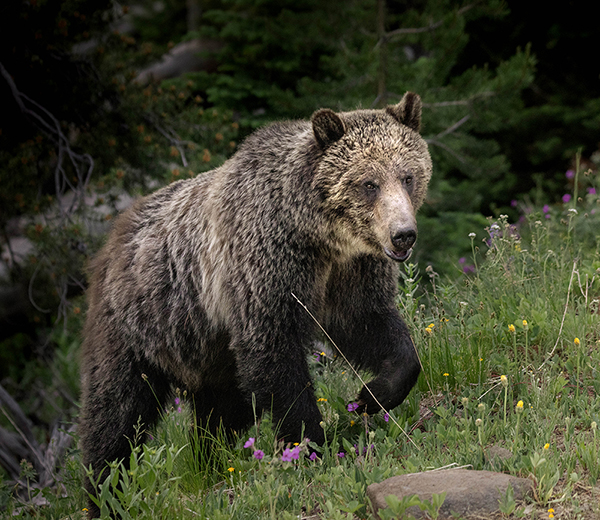
150-600mm (191mm), F/5.6, 1/400 sec., ISO 1600
Click image to view larger
The story behind this photo is one of my favorites. I was sitting on top of my car in Yellowstone, while three of my friends were in the car. The bear had been digging in a bunch of brush for about 30 minutes and was hard to see. All of a sudden he came out into this section of wildflowers, and I was able to capture the movement of his paw as he moved through the grass. The bear was only about 20 feet away from the roadway at this point, but you can’t tell by looking at the photo. That’s a huge advantage of this 150-600 lens. My friends all had prime lenses on their cameras and couldn’t switch lenses in time to get a good photo of the bear as it came closer. I was able to adjust on the fly and get the shot before it sprinted over the hill and was gone.
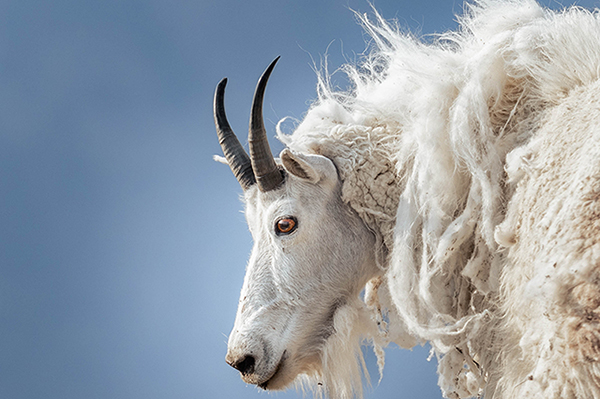
150-600mm (256mm), F/5.6, 1/400 sec., ISO 160
Click image to view larger
This was my first time photographing mountain goats, in an area outside of Yellowstone called the Beartooth Mountains. On this particular day, I was driving with my family and we came around a corner to find a group of about 20 mountain goats, just standing off the side of the road. I spent a couple hours photographing them. We were at such a high elevation—probably about 10,000 feet above sea level—so the background was nearly all sky. You can see that this goat is starting to shed some of its winter fur, which the 150-600 captured in great detail.
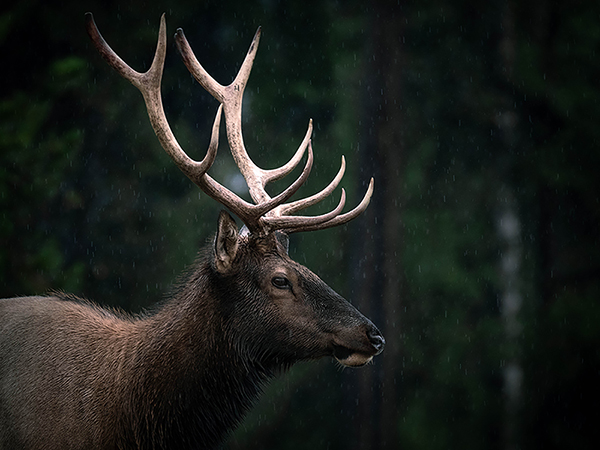
150-600mm (375mm), F/6.3, 1/320 sec., ISO 1250
Click iamge to view larger
I was hiking through the woods, looking for owls, when it started to rain. I was bummed, because I didn’t think I’d find any owls in that kind of weather. I started heading back toward my car and saw this elk I’d passed earlier without paying any mind to it. Now, with the rain coming down, it added so much texture to its fur, and the background was perfectly dark and moody. It just goes to show you that even if something doesn’t seem like a photo opp at first glance, that could change in an instant.
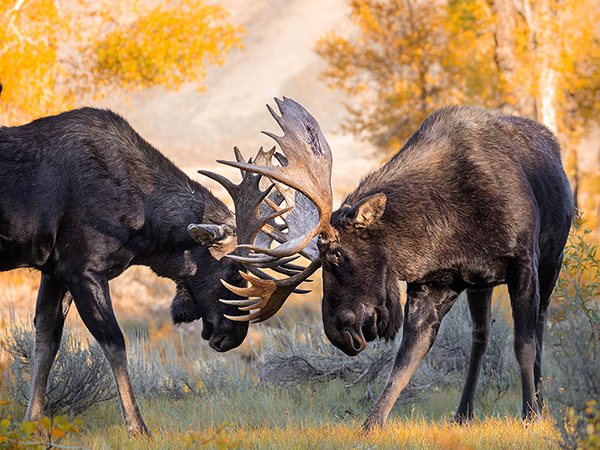
150-600mm (173mm), F/5, 1/400 sec., ISO 640
Click image to view larger
I took this photo of the sparring moose in Grand Teton National Park in September. Rutting, or mating, season, when you’ll see more fights for mating rights, doesn’t kick into high gear until the end of that month, so I didn’t expect to see any action like this. I spotted these two bull moose walking around, not doing much, when suddenly they both stopped, looked at each other, and then put their antlers together and began sparring. Their antlers crashing together makes a somewhat frightening noise, but I was excited to be able to capture that photo with those gorgeous fall colors behind them.
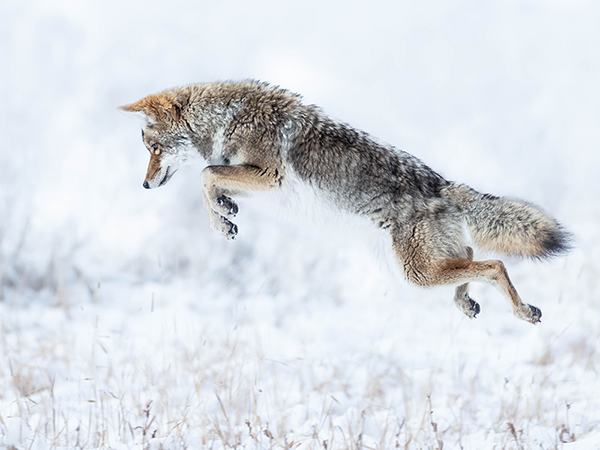
150-600mm (375mm), F/6.3, 1/800 sec., ISO 400
Click image to view larger
This is an example of being in the right place at the right time. This was a coyote I saw just off the side of the road. Coyotes listen for mice underneath the snow and then go leaping after them. I photographed this one a few different times jumping up in the air as it went on the hunt. What’s nice is it leaped up eight or nine times before it caught anything, so I had plenty of chances to keep taking pictures until I got the photo I wanted.
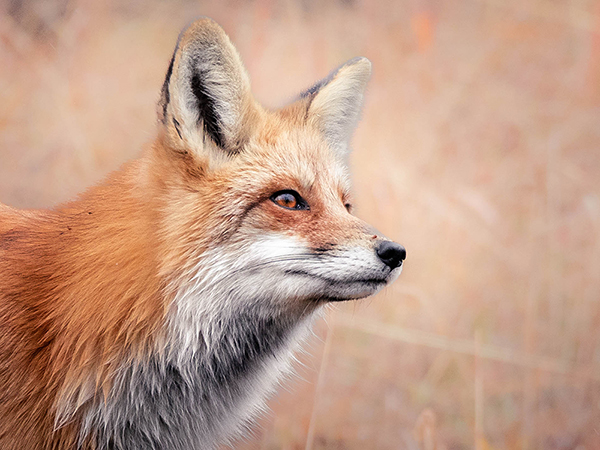
150-600mm (500mm), F/6.3, 1/400 sec., ISO 1000
Click image to view larger
This is a fox I’ve photographed a couple of different times in the fall in Yellowstone. On this particular occasion, it was the last day in Yellowstone before the roads closed for the season, with a big winter storm on its way, so there was talk of closing the roads early. I debated heading out before they did that, but then the snow started falling and I spotted this fox, looking pensively up at the snowflakes beginning to float down. Here I was, worrying about the weather, and the fox was so peaceful, just staring up at the sky. It was a beautiful moment. I was able to zoom way in to capture that expression on its face without disturbing its serenity.
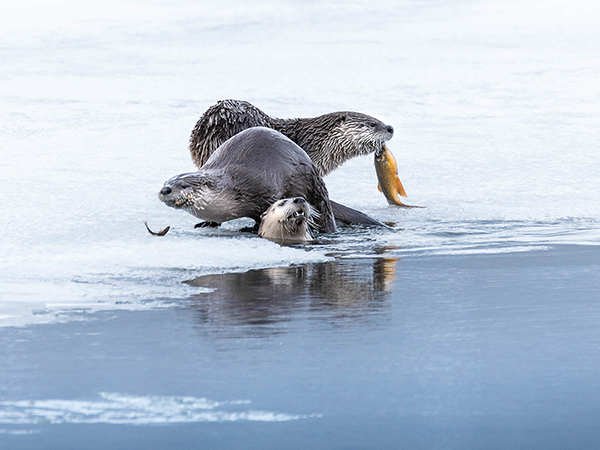
150-600mm (600mm), F/6.3, 1/640 sec., ISO 400
Click image to view larger
I took this in December after I'd been lying out in the snow taking pictures of these river otters for a few hours, in 10-degree weather as it snowed around me. I had to keep running back to my car to warm up my hands before heading out to photograph them again. It made me realize just how tough these animals are, to be able to survive all winter long in such harsh conditions, and how patient they are, too—they kept diving under the ice for fish and coming back up with nothing. I connected to that feeling of patience, as I sat there photographing them. The fish that one otter finally yanked out added a splash of color to the photo.
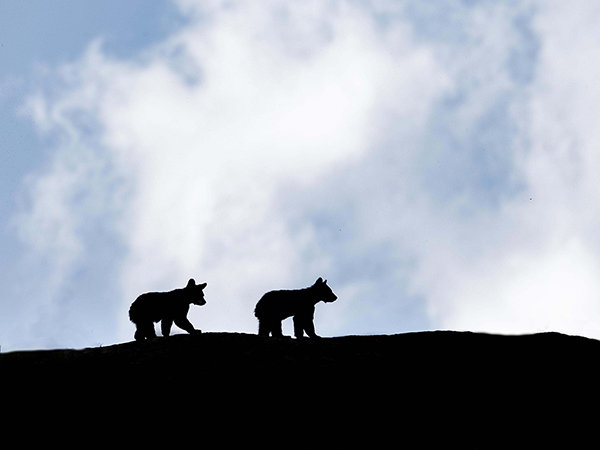
Click image to view larger
Until this year, I'd never really had friends that were also into wildlife photography. On this particular day, we’d spent the whole day hiking around, looking for mountain goats, and didn’t have any success. As we were heading back through Yellowstone, we saw a bunch of cars stopped and figured maybe it was a black bear, so we parked and walked up to where the crowd was. They were watching these bears, which were really high up on a hill, with shrubs all around, but there wasn’t really a great angle to photograph them from. However, there was a big boulder that was hanging over the hill, and one of my friends said, “Wouldn’t it be awesome if they climbed up on that boulder?” We all laughed, but sure enough, two of the bear cubs climbed up and started walking along the edge of the boulder, silhouetted against the sky. It was such a cool moment. It’s like the bears heard us.
To see more of Julia Cook’s work, go to https://littlelightningnature.com or check out her Instagram.
More Photo Tips | Watch Videos | Learn More About Tamron Lenses | Photo Gallery
